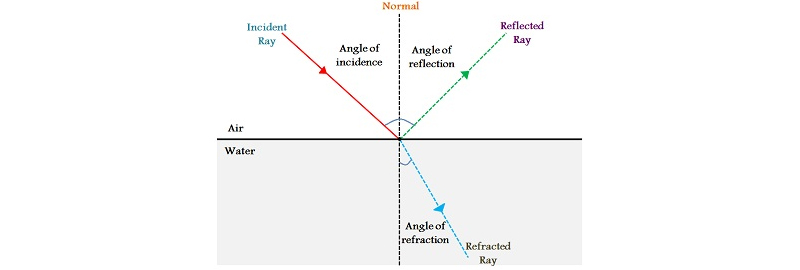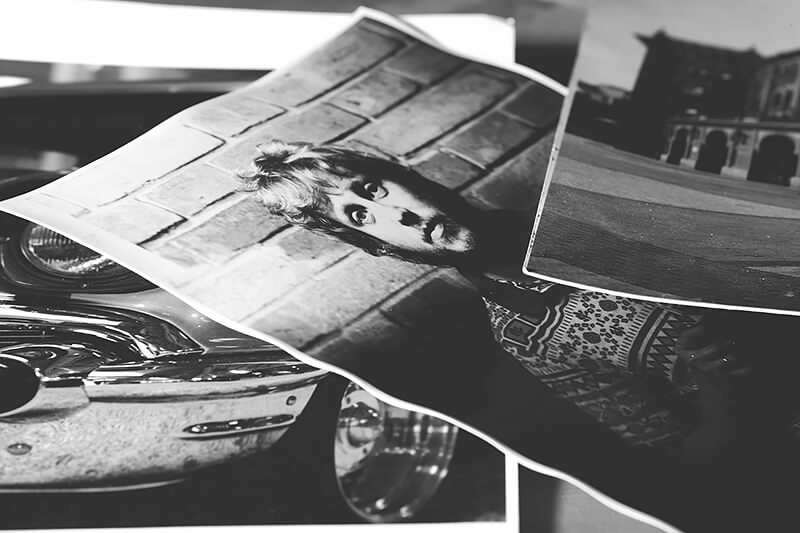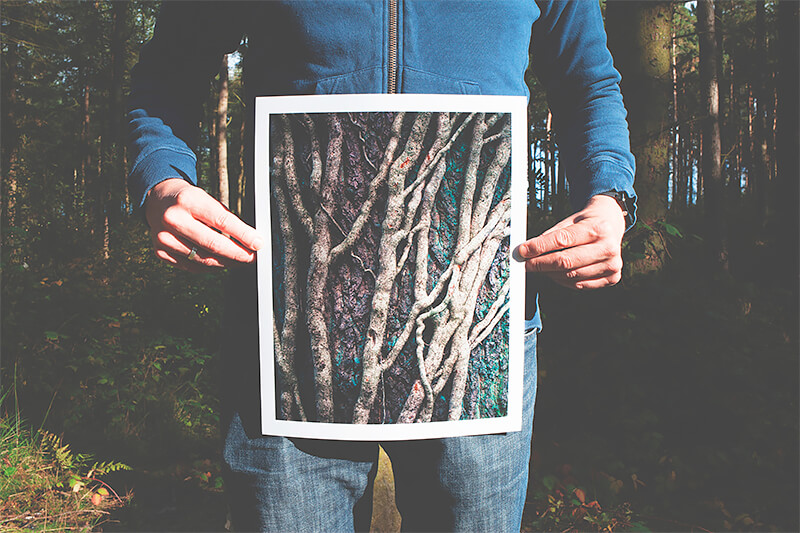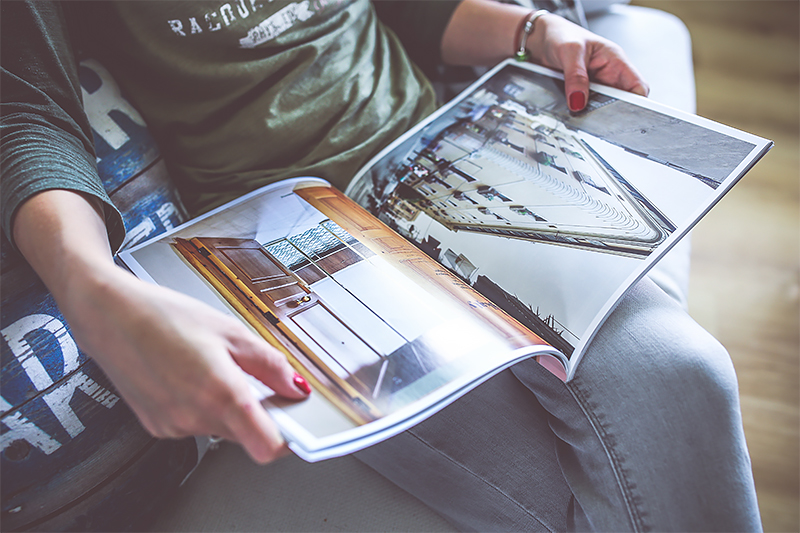It's the question that stumps most people at the photo printing stage -
should I choose a glossy or matte finish?
The motivation behind your final choice may be based on artistic preference or pricing.
In this post, we will discuss the difference between matte and gloss finishes and when you should choose to use each one.
Glossy Photo Finish
Photos printed with glossy finish have a natural shine to them. They are designed to reflect as much light as possible.
The gloss is added as an extra layer, to specifically add shimmer to a photo.
One of the greatest differentiators between matte photos and glossy photos is this extra layer of shine - so a glossy photo is actually a matte photo with an added layer of gloss!
The addition of gloss seems to have a positive effect on the colors of an image. The colors of glossy photos seem more deep and vibrant.
Gloss seems to also add definition to the borders of an image, so images appear brighter and clearer.
Glossy images come in two primary intensity levels.
High gloss and semi-gloss.
The high gloss option will produce the highest shine possible; the semi-gloss category falls in between a high gloss finish and a zero gloss finish (matte).
Though not as intense as a full gloss finish, semi-glossy photos do make photo colors pop, but with the benefit of less light reflection.
When to Use a Glossy Photo Finish
Since glossy paper makes the colors of an image more vibrant, this coating option works best for colored photo prints.
The shine on glossy prints also adds a contemporary element to your photos so this finish is not recommended for vintage style photography, such as images printed in black and white or sepia tones.
So if you want an emphasis on the colors of your photos (such as family Christmas photos boasting ugly Christmas jumpers) a glossy photo finish is a great choice that will really make all the colors pop.
If you are printing high definition photos, a glossy finish will give your prints the crisp and clear effect you are seeking.
The Downside Of A Glossy Photo Finish
The shine on glossy paper can, however, be problematic, especially if your photo is printed in a very large size.
The larger the size of a photo, the bigger the light reflection seems to be.
This will result in observers having to reposition their point of view in order to be able to soak in the beautify of the image without the distractions of glare spots.
If you are wanting to display your photo print behind a glass frame, a glossy finish will be particularly problematic.
The glass surface of a photo frame is already highly susceptible to light reflection, to place a glossy photo finish photo behind the glass is to add another layer of reflection which will make the image very difficult to appreciate.
So unless your intended observers will be wearing polaroid glasses, for photo frame applications, it is best to settle on a less shiny finishing coat such as semi-gloss or matte finish.
Besides causing high levels of reflection behind glass, glossy photos will stick to the glass as a result of their naturally sticky surface.
This is a big problem if you ever decide to change the photo's frame - peeling off the stuck photo may rip it.
The other downside to glossy photos is their high susceptibility to getting scratched.
The smooth surface offers little to no protection against the accidental nail scratches or scratches caused by metallic elements such as keys or rings.
Besides scratches, fingerprints are also a great enemy of glossy photos.
You may have noticed that glossy photos feel more ‘sticky', this sticky effect means your fingerprints are embedded onto the surface every time you touch it.
Matte Photo Finish
If you want to minimize the shine of a photo as much as possible, a matte photo finish is the best choice for you.
Because matte finish photos minimize light reflection they can be displayed in highly illuminated areas such as living room walls or near floor lamps.
The less intense light reflection of a matte photo finish is caused by a combination of the refractive and light scattering effect of the matte coating.
When light is reflected, it is bounced off a surface and redirected.
When light is refracted it is absorbed and scattered by a surface layer.

A reflected ray bounces off a surface but a refracted ray is absorbed and slightly redirected by a surface
When light hits a matte surface it is scattered in different directions as a result of its uneven surface.
This uneven surface is a deliberate material property caused by many tiny indentations on the surface of matte finishes.
As well as scattering light, matte finishes absorb more light (refracts it) making the photo images easier appreciate in highly lit conditions.
When to Use a Matte Photo Finish
If you are planning on displaying your photo prints behind glass, a matte finish is definitely the best choice.
Not only will matte photos not stick to the glass of photo frame, but they will also reflect less light, making them much more enjoyable to look at.
Matte photos work well on any glass application, not just within a photo frame. If you are sticking photos onto a glass partition in your office, matte finished photos can be readily removed without damage.
If your photos will be handled often, a matte finish would be a better option since they will not absorb the fingerprints of users.
The Downside Of Matte Photo Finish
Because matte finishes are designed to refract as much light as possible, this comes at the cost of colors not appearing as vibrant as they do in glossy photos.
So matte photo finishes do not offer as wide a color range as glossy photo finishes.
Matte photo finishes also minimize the sharpness of a photo, so if you are printing an image with a particularly high emphasis on clarity (such as high definition photos) a matte finish may not be an appropriate choice.
Conclusion
Your choice of photo finish depends on both the application of the printed photo and the effect you are seeking.
Photos displayed in a glass frame should be printed with a matte finish in order to prevent them from sticking to the glass surface and reflecting too much light.
If you are wanting to place a heavy emphasis on the vibrant colors of your photos and the crisp definition of it, a glossy photo finish would be a much better choice.
Written By Matt Fey, Media Marketing Manager at
Printing Center USA




